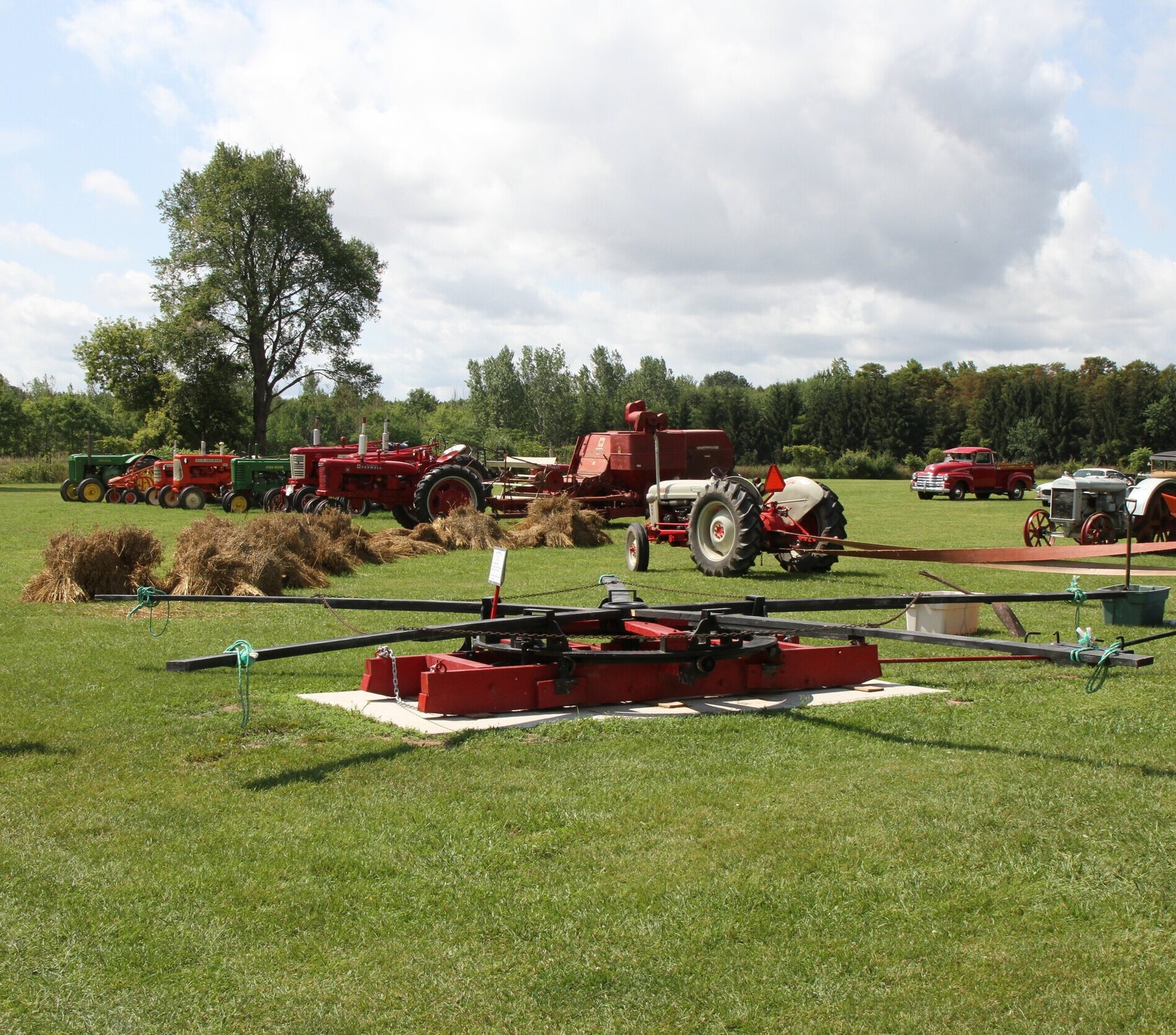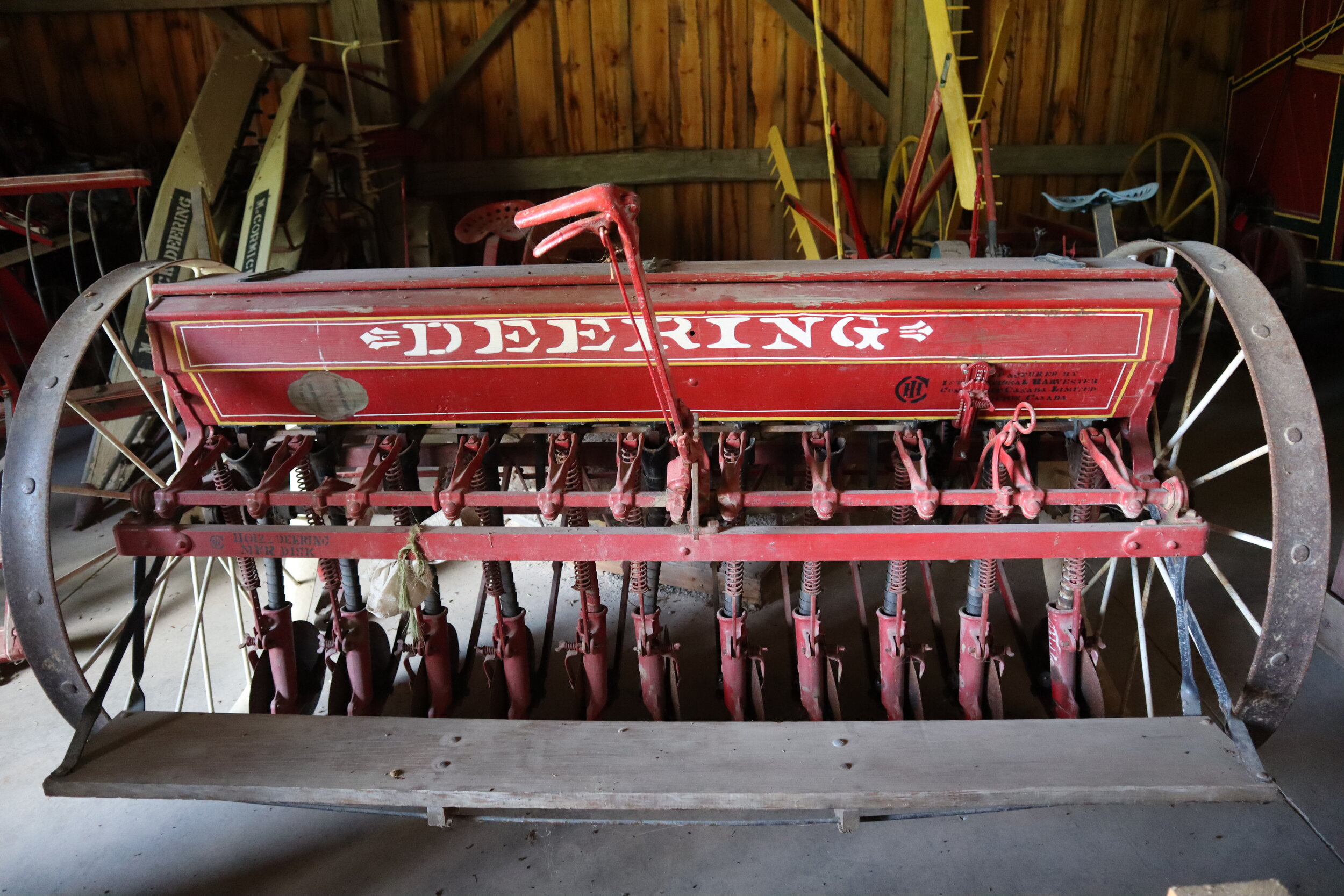Jury Farmstead
Home to part of the Village’s agricultural equipment collection, and our Heritage Field Crop Program.
Changes to Agriculture
By the end of the 1880s most modern farm machinery had been invented. Advanced agricultural technologies and “scientific methods” spread quickly via new farming organizations like “The Grange” and “Patrons of Husbandry.” The ease and speed with which farmers were able to yield product made them an economic engine driving the development of Middlesex County. Rural and urban communities became interdependent as growing populations contributed to the rise of businesses that served the region.
An increase in income, from the expansion of markets and supplemental jobs, allowed families to purchase from a growing industry of agricultural implements, finished clothing, and household items, often from catalogues or specialized businesses.
Families in this period were often still quite large and the advances in farming technology combined with the continuing rise in settlement and land prices led to less farm land being available. As a result, growing numbers of immigrants and youth took to the city and trades rather than farming. For the first time since settlement in the area began there were more people living in cities than in rural areas.
Jury Drive Through Barn
Replica of an 1890s Barn Structure
Built 1998
Building a replica barn for the Jury Farmstead at the Village in 1998.
London and Middlesex Heritage Museum Archives
The Jury drive-through barn is an example of a popular style, with doors on both sides to allow horses and wagons to pass through easily. The sides and an upper level could be used for storage.
Building restoration supported by Mount Moriah Masonic Heritage.
Horse Power
Joseph Hall Works
Oshawa, Ontario
Circa 1857 - 1867
A five sweep horse power in operation in front of a drive through barn on the farm of Andrew Roberton, near Kashagawigamog Lake, Haliburton County, Ontario. Courtesy of Jeanette Elliott
The horse power at the Jury Farmstead was manufactured by the Joseph Hall Agricultural Works. It is a five-sweep model, designed to have a horse, or a team of horses, attached to each “sweep” or arm. The energy produced was used to power a variety of belt-driven machines and equipment.
Steam Traction Engine
George White & Sons Co.
London, Ontario
Circa 1912
The Village’s steam engine was made by George White & Sons Co., one of several local manufacturers of agricultural equipment.
Steam traction engines were used to move heavy loads, plough ground, or provide power to equipment like threshing machines and mobile sawmills.
















